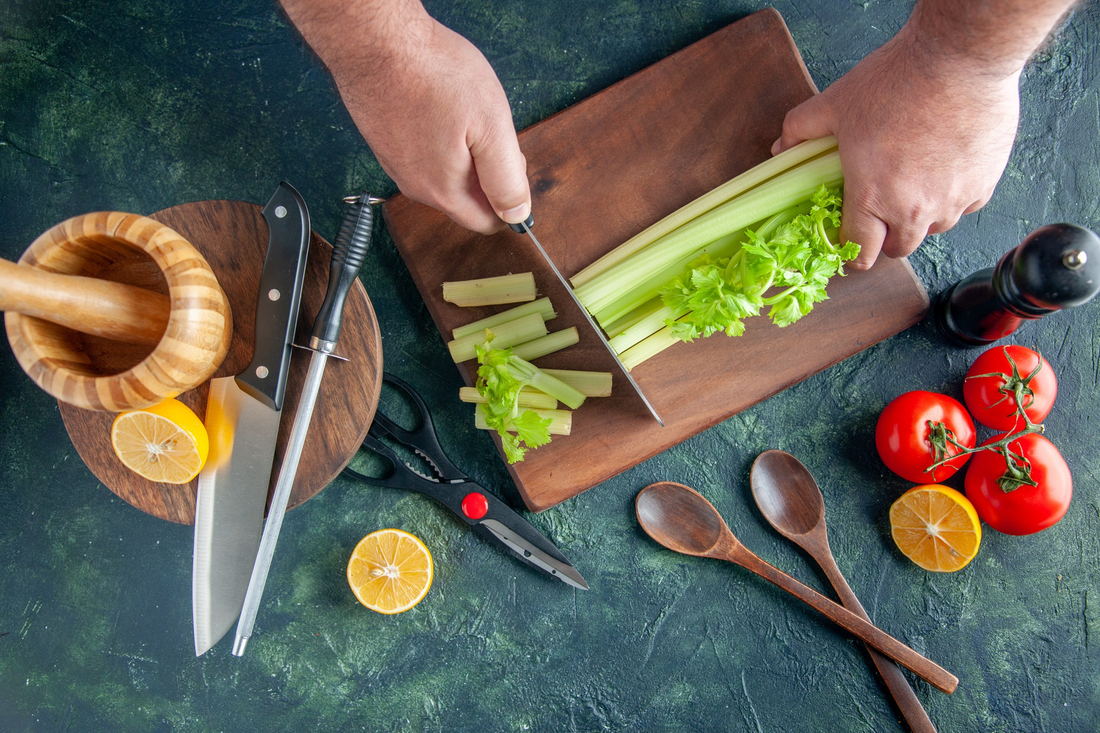
How to Maintain Your Opinel Knife for Everyday Use
Share
Introduction
The Opinel knife is a timeless tool loved by chefs, hobbyists, and home cooks for its simplicity, durability, and versatility. From preparing fresh produce to slicing bread, it delivers precise performance when cared for properly. However, maintaining an Opinel knife for everyday use requires a blend of correct handling, regular maintenance, and understanding of its unique design.
Regular care helps keep the blade sharp, prevents rust, and prolongs the knife’s lifespan. It also improves safety in the kitchen. For knife enthusiasts, understanding how to care for an Opinel knife ensures that this trusted tool performs consistently over time.
When exploring knife maintenance, it's worth noting the importance of high-quality olive oil in preserving wooden handles and protecting blades. Olive oils can act as a natural preservative. You can learn more about high-quality oils at Olivelane Oils.
1. Understanding the Opinel Knife
Opinel knives stand out for their simple wooden handles, durable stainless steel or carbon steel blades, and locking collar mechanism. These features make them lightweight, reliable, and easy to maintain. However, their unique design also means they require specific care practices to ensure longevity.
Unlike other knives, the wooden handle of an Opinel knife needs regular maintenance to prevent cracking and warping. Similarly, the blade requires sharpening and cleaning practices suited to its design. Understanding these specifics is the first step in keeping your Opinel knife in excellent condition.
Comparing Opinel vs other knives, the Opinel is more straightforward in construction but demands more consistent upkeep due to its wooden handle. Unlike synthetic handles, wood absorbs moisture and oils, requiring additional care to avoid damage.
2. Care for Opinel Knife – Cleaning and Handling
Proper cleaning is essential for preserving your Opinel knife. After each use, rinse the blade with warm water and mild soap. Avoid soaking the knife for prolonged periods as water exposure can harm the wooden handle. After washing, dry the knife thoroughly to prevent rust and handle damage.
Do not put your Opinel knife in the dishwasher, as harsh detergents and heat can deteriorate the handle and affect blade sharpness. Instead, wash manually and store in a dry environment.
For safe storage and to extend the knife’s lifespan, consider dedicated knife storage options. Using best cutting boards made of wood or high-quality plastic protects the blade from unnecessary wear. This not only preserves the knife’s sharpness but also improves kitchen safety by providing stable surfaces for cutting.
3. Knife Sharpening Tips
One of the most important maintenance tasks is sharpening your Opinel knife. A sharp blade improves performance, reduces effort, and enhances safety. Using proper tools and techniques is essential for maintaining the edge without damaging the blade.
Knife sharpening can be achieved using whetstones, ceramic sharpeners, or honing rods. Regular honing maintains the edge, while occasional sharpening restores the blade. When sharpening, hold the blade at the correct angle and avoid over-sharpening, which can reduce blade lifespan.
For beginners, following expert knife sharpening tips can make the process more effective. For instance, consistent angle maintenance and gradual pressure improve sharpness and reduce blade wear.
You can explore a range of Opinel knives and accessories that support long-term maintenance at Olivelane Opinel Knife Collection.
4. Maintaining Wooden Handles
One of the most distinctive features of Opinel knives is their wooden handles. Proper handle care is key to extending your knife’s life. Wood absorbs moisture and oils, which can cause swelling or cracking if not cared for properly.
To maintain the handle, regularly apply food-safe mineral oil or olive oil to nourish the wood. This keeps it smooth, enhances its durability, and provides a subtle protective barrier. Regular oiling is especially important if the knife is frequently exposed to moisture.
Avoid storing your Opinel knife in humid environments. Instead, keep it in a dry place with controlled temperature to prevent wood damage and maintain blade integrity.
For additional options in natural oils for handle maintenance, explore Olivelane Olive Oils for premium-quality products that protect and preserve wooden knife handles.
5. Knife Safety in the Kitchen
Proper care of your Opinel knife also means ensuring safe use. Maintaining a sharp blade reduces slipping risks, while correct handling prevents accidents. Knife safety in the kitchen involves both proper maintenance and mindful usage.
Always store knives securely and keep them out of reach of children. Use cutting surfaces that prevent slippage and avoid applying excessive force when cutting. Regular inspection of the blade and handle can help detect early signs of wear or damage, allowing preventative care before accidents occur.
By combining maintenance with safety practices, your Opinel knife will continue to deliver high performance for everyday cooking tasks.
